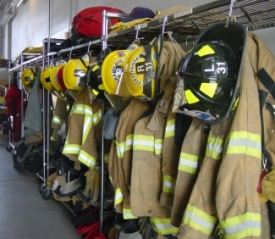We can only speculate on what led to the tragic explosion of Ruihai Logistics’ warehouse in Tianjin, China on August 12. The explosion resulted in the deaths of over 50 people and injured more than 700. As the world waits to hear what caused the tragedy, this article does not point fingers; instead it discusses actions that might have prevented the explosion from happening, and procedures that could have minimized the catastrophe.
The Facts
Some key facts leading up to the explosions:
- The first firefighters arrived on scene at 23:06 local time responding to containers on fire. The second team of firefighters arrived at 23:16, fourteen minutes before the first explosion.
- 12 firefighters are confirmed dead and 36 are still missing.
- The explosion site was not a manufacturing facility. Potential causes include improper labeling of hazardous chemicals and improper storage/handling of hazardous chemicals.
An Effective Safety Program
Prevention is critical to fostering a safe working environment. Often, by the time an incident has occurred it is too late to react (although knowing how to react is also critical). To prevent incidents from occurring in the first place, companies must implement an effective safety program. Use the following steps as a guideline to develop your safety program.
- Designate a team to establish a safety program that includes chemical storage and handling procedures, fire procedures, and emergency response plans. Ideally, the team will create practice scenarios with which their program can be tested.
- Routinely perform chemical inventory counts by quantity, type, and location
- Integrate inventory software with your purchasing system (anytime a new purchase is made, the inventory should reflect that order)
- Ensure that chemicals can be tracked when moving around a facility
- Emphasize the importance of labeling. Putting someone responsible as a gatekeeper can help accountability.
Following these guidelines will help companies prevent incidents from occurring. However, despite implementation of these guidelines, accidents do happen. Knowing how to react when an accident occurs is critical to minimizing the damage.
A similar Case in the US
On April 17, 2013, a fertilizer plant caught fire in West, Texas, USA. First response firefighters arrived at the scene, unaware that ammonium nitrate, a potentially explosive chemical, was stored within the plant. Tragically, 10 firefighters lost their lives as the fertilizer plant exploded. Further investigation found that the firefighters did not know how to respond to the fire because the fertilizer company, West Fertilizer Co., and local emergency response authorities did not properly communicate the presence of such a dangerous chemical.
Companies storing hazardous chemicals and local emergency response authorities greatly benefit from utilizing a centralized system of communication. By being on the same page in the event of an emergency, first response teams can easily determine whether or not hazardous materials are on site, and if so, how to handle the situation safely. Quantum’s Firefighter Right to Know module was purchased by the City of Ann Arbor, for this purpose.
These principles can be applied to the Ruihai Logistics incident, and may have prevented or minimized the catastrophe in Tianjin. Understanding what went wrong is the beginning of understanding how to improve.
| Company | West Fertilizer Co. | Ruihai Logistics |
| Location | West, Texas, USA | Tianjin, China |
| Incident | Fertilizer plant containing potentially explosive chemical ammonium nitrate exploded | Warehouse containing multiple hazardous chemicals exploded |
| Casualties | 14 deaths, >160 injured | >100 deaths, >700 injured |
| Root cause of incident | Improper communication between business and local emergency response teams. | TBD |
| Solution | Establish effective safety program and implement contingency plan | TBD |






